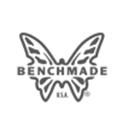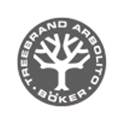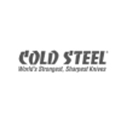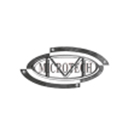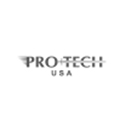How to Choose a Suitable Knife from our Collection of Knives for Sale
26th Feb 2021

Trying to narrow down all the choices from among our knives for sale to pick out just one is daunting. It’s hard enough when you only consider how many knives we have, but it becomes even more difficult when you remember that knives don’t simply vary in nature to appeal to different tastes. They vary because they serve different purposes.
Use this quick guide to pick out the most suitable option from among our selection of knives, based on your intended uses, and if you run into a hiccup just email us at WhiteMountainKnives@gmail.com.
By the way, when in doubt, follow the maxim of the alternative at the bottom of this article!
EDC: Folders
There is a term among knife enthusiasts known as EDC, which stands for everyday carry. Once you carry a knife everyday, you’ll be wondering how you ever got along without one. Anyone who’s looking for a knife to carry all the time should remember these pointers:
●Locking vs. non-locking folding knives: As a general rule, most EDC knives are folders for the same convenience of carrying a folder in a pocket or via the aid of a pocket clip. They’re quick to deploy and you don’t need a sheath. Also, many of them are small. However, for a folding knife to come anywhere near the strength of a fixed blade, it should be a locking model. Save your non-locking folders for other purposes besides EDC, like as a backup, for light food preparation, or specific tasks like whittling (see below).
●The comparative strengths of locks: There are a lot of specialized types of locks out there, but probably the two most common are lockbacks and linerlocks (or framelocks, which are a variant). Lockbacks are more difficult to disengage, although they’re typically stronger than linerlocks. Also, liner locks can disengage while twisting the knife, allowing the blade to fold on your fingers - be wary of this when using a folder.
●The value of synthetic scales: Oftentimes EDC knives get used hard, even abused, and are given very little routine care. If you want to keep a knife in your pocket and hardly ever rinse it off or bring it back to speed, get a knife with tough synthetic scales like G10 or Micarta. These materials are tough, resistant, and impervious to moisture and corrosion.
●The value of corrosion resistance: The same thing that makes synthetic scales valuable also imparts a lot of convenience to some stainless steels. Since EDC knives get used hard (and let's face it, few owners are conscientious enough to oil them) a quality corrosion-resistant alloy is highly valuable.
Slip Joint Pocket Knives

Among the folding knives available here are pocket knives that do not lock; these use a mechanism known as a slip joint that holds the blade open with a little bit of tension. Pressing on the spine with sufficient force will enable the blade to fold and close. These knives are not suitable for hard work, so, when would you want one?
●When non locking is preferable: While a locking blade is more valuable than a slip joint nearly all of the time, if for legal reasons you cannot carry a locking folder, a slip joint may be preferable.
●When should you carry one?: Many slip joint pocket knives have several blades, which means you can use them for various purposes; some for breaking down boxes, some for food prep, and so on and so forth.
●What are they useful for?: In addition to the convenience noted above, some slip joints are useful as backups for other knives. Since you always want to carry a back up with you, a little pen knife might be ideal.
A Note on Whittling
Since we’re on the subject of slip joints, it’s important to note that slip joints are highly useful for whittling for two reasons. For one, many slip joints have small blades, including sheepsfoot blades that are excellent for woodworking, and for another thing, since you’ll only ever be applying force toward the edge of the blade and not in the opposite direction, with the right care and attention, a slip joint can be safely used for carving and whittling.
Shop and Craft Use
Keeping a knife or some other type of blade for general utility in the shop for mechanical or craft use is a must. Some might carry a utility knife like a razor blade, and these are useful tools but very limited. It’s better to keep a folding knife or even a short fixed blade around for such tasks.
●Fixed vs. folding knives: Fixed blades are stronger than folders, and since you might be putting a lot of force behind your efforts, generally speaking, fixed blades are more useful for utility than folders. However, any knife is better than no knife. If you do go with a fixed knife for utility use, generally, shorter is better, as is a drop point, a straight back or a tanto point.
●Steel types: While some stainless alloys are corrosion resistant, you’ll probably have oil around the shop and conditioning the steel won’t be a problem. Tool steels that need a bit of extra maintenance, like A2, D2, and 1095 are remarkably strong, will hold an edge for a long time, and can be easily maintained and conditioned. In this arena, tough steels like these are better than softer stainless alloys because they will hold their edges longer and will stand up better to hard work.
●Blade styles: For utility or shop work, a fine point is rarely valuable. Similarly, fragile hollow grinds are not particularly useful. A short blade with a drop point, a tanto point or even a chisel point is more useful shop use. Also flat grinds and convex grinds are tougher and will last longer carving wood, cutting wires and performing other similarly grueling tasks.
Tactical Use
Law enforcement officers, paramilitary personnel and fire responders all have pressing needs for dependable, reliable blades. Here are some things to keep in mind when shopping for a knife for tactical use.
●Compatibility with other systems: When it comes to tactical use, practicality takes all precedence over form. Many tactical knives are plain; one of the most important things to look for is compatibility with other systems. For example, many sheaths made for tactical knives are compatible with MOLLE systems so that it’s easier to incorporate the knife into your setup of vital gear.
●Multi-functionality: Many tactical “knives” are actually multi tools. Since tactical applications are unpredictable by nature, one needs always to be prepared for the unexpected. Multi tools with wire cutters, pliers, saws and even speciality tools like oxygen tank wrenches are highly valuable in these scenarios.
●Should you get a partially serrated blade?: More often than not, you can find knives designed with tactical applications with partially serrated blades. At the minimum, most models are offered in two versions, with a full straight edge and a partially serrated one. These serrations are useful in cutting through tough synthetic straps and cordage, or anything else that you come across in the line of operations.
●What else should you pair a tactical knife with? If you’re preparing a bug out bag, for example, you should pair your tactical knife with the other vital survival and preparedness essentials. You’ll need, at minimum, a first aid kit, sources of light, firemaking equipment, gloves or other protective clothing, a container for cooking or boiling water and cordage; but you should include anything else you see a need for.
Hunting Knives
The term “hunting knife” gets thrown around way too much. Any knife is a hunting knife when you take it hunting; still, here are some of the finer points of some knives for sale that are specifically designed for processing game.
●Skinning, fileting and boning: Not all hunting knives for sale are created equal. Skinners are designed for removing the hide from an animal; they have widely swept bellies and sometimes rounded points to avoid puncturing the viscera. Fileting and boning knives are similar in style and used for similar purposes. They have long, thin, flexible blades and are used for removing meat from bone, cutting through joints and ligaments, and processing the cuts once removed from the animal.
●Steel type and corrosion resistance: If you don’t take particular care of the knife you used to process game, you should look for a high-quality stainless alloy, preferably one with excellent edge retention like one of Buck’s 420HC knives or another made with a hard alloy like S30V. Since these knives are used more for delicate tasks and are rarely abused or pounded on, the corrosion resistance and extra “brittleness” of these steels might never be noticed.
●The full tang compromise: As a general rule, you should carry full tang knives, where the tang extends all the way to the end of the handle and is the full width of the scales. However, since hunting knives are mostly used for cutting and sliced and less frequently for batoning and other hard work, you can get away with a partial tang, as is found in many popular Buck knives and Mora knives that are still revered for their quality.
Survival Knives and Camp Knives

There’s a bit of debate about what the difference is between a survival knife and a camp knife. Allow us to give our take.
●The difference: Survival knives tend to be smaller than camp knives. As a general rule, survival knives have fixed blades between 4 and 6 inches, whereas camp knives are usually longer. Some have blades longer than 13 inches. A survival knife should be able to process game, start fires, and break down most game. By contrast, camp knives are typically reserved for heavy use like chopping and batoning.
●A full tang is a must: Regardless of whether you call it a camp knife or a survival knife, it should have a full tang. The manner in which you will be using a knife like this requires it.
●Balancing the virtues of different steels: For survival knives and camp knives, you’ll need a tough steel. Softer is a little bit better so that you can touch the edge up in the field, and you won’t want to deal with chips and rolling. Additionally, stainless alloys can be seen as valuable because if you spend a lot of time in the field, it can be hard to maintain a knife.
●Uses for survival and camp knives: Uses for survival knives and camp knives include but are not limited to the following:
-Batoning
-Processing wood
-Chopping
-Whittling and carving
-Food preparation
-Cleaning fish and game
-Starting fires
Generally, they need to be useful for just about anything you can do in the outdoors.
Filet Knives and Others Geared for Fisherman
In addition to the other outdoor knives for sale mentioned here, there are some special knives designed for the use of fisherman; generally these are referred to as filet knives or as fisherman’s knives, which are a style of folding pocket knife that has a thin blade as well as a toothed tool intended for use as a scaler.
●Flexibility and dexterity: A filet knife must be flexible, light and thin. This enables the blade to be worked around the meat and bones of a fish so that the meat can be separated from the rack. Corrosion resistance is also valuable because these knives are rarely used hard and are always in contact with water.
●Other tools commonly paired with “fishing knives'': A fisherman’s knife, detailed above, has both a thin knife that can serve the basic functions of gutting and fileting, but it can also be used as a bait knife. In addition, they often contain specially designed scaling tools.
The Alternative: Don’t Just Get One!
While these pointers should be valuable for you if you’re looking to get just one knife from our collection, the real answer is that one knife will never do. Life is variable and so are the challenges you will face in the outdoors. That’s why so many hunters, fisherman, campers and preppers carry multiple knives; each one serves a distinct purpose.
Take a look through our categories of knives for sale, including a variety of useful tools like saws and axes, and reach out to us at WhiteMountainKnives@gmail.com if you need further assistance.

